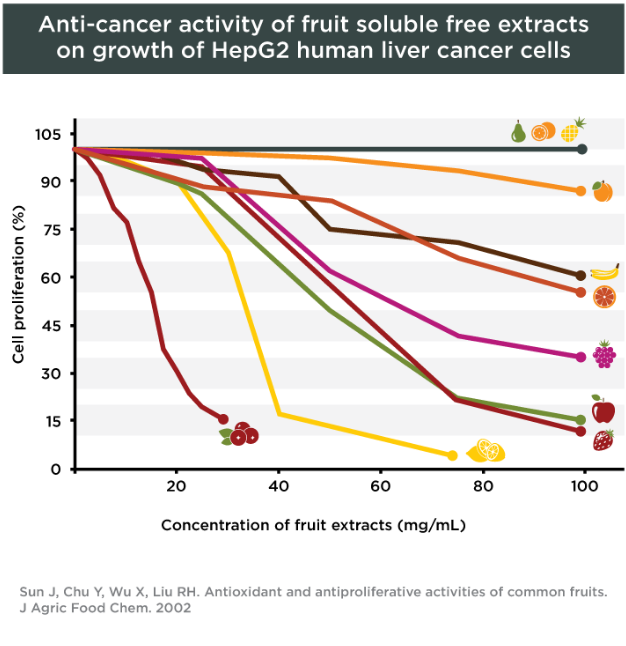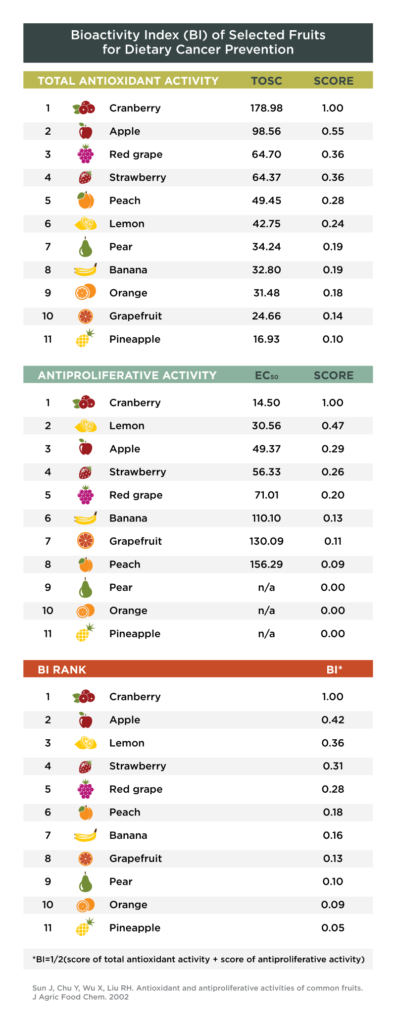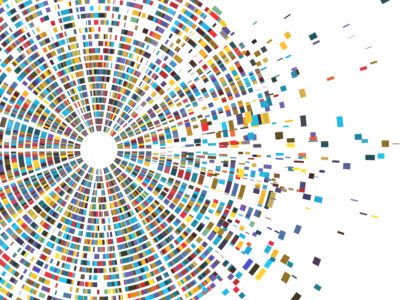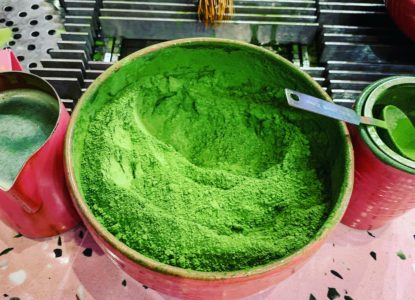Why an “Apple a Day” is Still Sound Dietary Advice
Article at a Glance
- There are approximately 19 grams of sugar in the average apple, but apples aren’t considered high glycemic because of the fiber count.
- The average apple contains 4.4 mg of quercetin, an antioxidant linked to heart and lung health, which has also shown promise as a mast cell stabilizer.
- A Cornell study found that antioxidants in apples were readily bioavailable and also found that the nutrients in apples could kill liver cancer cells.
- Several studies, including the Nurse’s health study, found that apple consumption was linked to a statistically significant reduction in lung cancer risk for women.
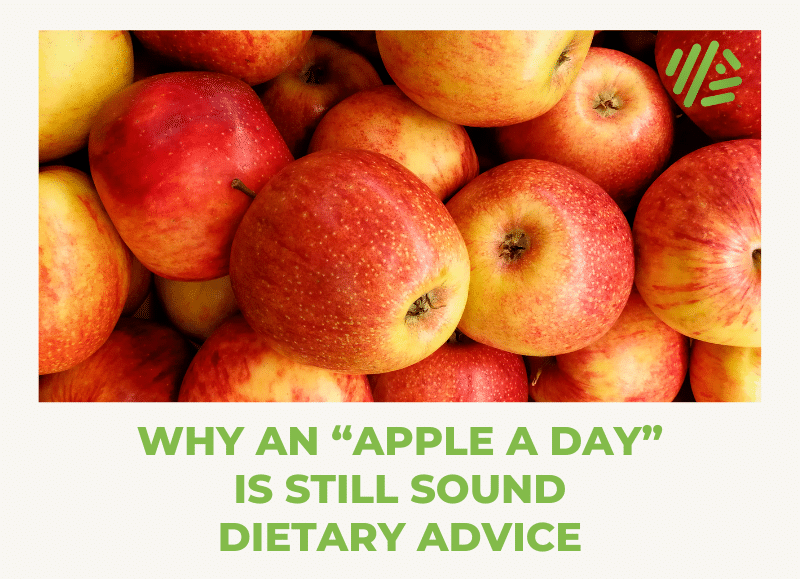
Contents
An apple a day “keeps the doctor away,” or so the saying goes. But just how healthy are apples?
To find out, our research team reviewed a number of studies on how apples can impact health, and have summarized some of the most noteworthy below. Keep in mind that most of these studies are epidemiological in nature, meaning we can’t draw conclusions as far as causation is concerned in many cases.
I hope you enjoy this tour through the land of apples and nutrition.
How much sugar is in an apple?
Just how much sugar is in apples?
According to the USDA, there are 19 grams of sugar in your typical apple.
4 grams of sugar is equivalent to one teaspoon of sugar, so one apple has almost 5 teaspoons of sugar, which is a hefty load. However, because mother nature wraps the sugar in apples in healthy fiber 4.4 grams of fiber, the sugar in an apple is a non-issue for most people.
Does the sugar in apples spike blood sugar?
A food that is “high glycemic” is a food that spikes blood sugar soon after eating it. Candy is a great example. The sugar from a Snickers bar goes straight to your blood stream, causing a temporary high, the release of insulin by the pancreas, and an inevitable crash.
How glycemic are apples? Apples are high in dietary fiber, which prevents the sugar content from reaching our blood stream as quickly as if we were to eat a Snickers bar. Nature designed apples with a built in “sugar governor” of sorts (fiber) that protects us against the nasty spikes in blood sugar caused by candy bars and other junk food.
The glycemic index ranks foods based on how quickly they spike blood sugar on a 1 to 100 scale. Pure glucose tests at 100. A baked potato scores 82, popcorn 55, and apples, I thought rather surprisingly, score 39, barely higher than carrots at 35. So, although an average apple contains 19 grams of sugar, its high fiber count prevents the sugar from hitting our blood stream all at once.
Antioxidants in apples
Apples are an important source of flavonoids, which are a type of polyphenol responsible for the color in plants, and generally regarded as disease fighters. Apple peels are highest in flavonoids. Although the full extent of their ability to fight disease has not yet been documented, there have been numerous studies which show that flavonoid consumption is a good thing.
Vitamin C is perhaps the world’s most famous antioxidant. There is vitamin C in apples, but interestingly, the vitamin C in apples accounts for only a tiny percentage of the fruit’s total antioxidant count. A study conducted at Cornell, which I dive into in more detail below, found that vitamin C accounted for less than one percent of the total antioxidants in apples (0.40). When it comes to apples, Quercetin, and not vitamin C, is the star of the show.
Quercetin is a type of flavonol, found in large doses in apples, that has chemopreventive (anti-cancer) effects in the body.
Quercetin has also been linked to increased heart health by lowering blood pressure.
For more information on Quercetin, check out this dynamite PubChem page. It is an awesome resource.
An average sized apple contains about 4.4 milligrams of quercetin for every 100 grams of apple. Therefore, a medium-sized apple of roughly 150 grams may contain up to about 10 milligrams of quercetin, which is a fairly significant dose. When you combine the quercetin count of apples with the bioavailability data from the Cornell study, we begin to see that apples are far more than just sugar and fiber.
Are the antioxidants in apples bioavailable?
We’ve established that apples contain high doses of antioxidants, especially quercetin, but are those nutrients “bioavailable?” Can our bodies use the protective enzymes found in apples?
A study performed at Cornell says yes, we can.
The Cornell study measured the bioavailability of the 11 types of fruit that are most commonly consumed, and found that apples have the second highest levels of bioavailability, ranking only behind cranberries.
The Cornell study found that antioxidants in apples were readily bioavailable and also determined that they had anti-growth effects on liver cancer cells. Interestingly, the Cornell authors also theorize that the total phenolic count of fruit has been underestimated in the scientific community because bound phenols have not been accounted for.
To quote the study:
Total phenolic contents of fruits in the literature were underestimated because the bound phenolics were not included. It is important to know the profiles of total phenolics, including both soluble free, and bound forms in fruits and vegetables…
Apples, flavonoids and cancer prevention
In light of the Cornell study, it wasn’t surprising to me when I found a number of studies that linked apple consumption with reduced risk of disease.
Nurses’ Health Study
This study, which appeared in the Journal of the National Cancer Institute, and which involved several Harvard trained doctors, looked at the association between lung cancer risk and fruit and vegetable consumption in 77,283 women in the Nurses’ Health Study, and 47,778 men in the Health Professionals’ Follow-up Study. Fruit and vegetable intake was associated with a 21% reduction in risk for lung cancer in women, but not for men. Few of the individual fruits and vegetables analyzed had any statistically significant impact on reducing lung cancer risk, except apples!
From the study:
Few specific fruits or vegetables demonstrated statistically significant protection against lung cancer, possibly because of the limited range of intakes for individual foods or the occurrence of protective factors in a variety of foods. Significantly lower risks were observed among the women for increases of 1 serving/day of apples and pears (RR = 0.63; 95% CI = 0.43–0.91)
Not such great news for men, but interesting nonetheless that apples were one of the standouts in such a large study. But don’t worry guys, there is positive apple data out there for you as well.
Consider this study out of Hawaii.
Hawaii Study
Also appearing in the Journal of the National Cancer Institute, this was a controlled study involving 582 patients with lung cancer, and 582 patients without lung cancer. The Hawaii study linked apple consumption to a reduced risk in lung cancer for both men and women.
From the study:
After adjusting for smoking and intakes of saturated fat and beta-carotene, we found statistically significant inverse associations between lung cancer risk and the main food sources of the flavonoids quercetin (onions and apples) and naringin (white grapefruit).
The Hawaii study found a 40–50% decreased risk in lung cancer in participants with the highest intake of apples, onions, and white grapefruit when compared to those who consumed the lowest amount of these fruits. Both men and women benefited from the flavonoid cocktail found in apples. Interestingly, the benefits found from eating apples, onions, and white grapefruit, were not seen with red wine, black tea or green tea.
Finnish Study
Perhaps the most impressive was a very large Finnish study with 10,000 subjects and a 24 year follow up. This study found a significant reduction in the risk of lung cancer development for subjects who consumed flavonoids. In Finland, apples and onion are the two biggest sources of flavonoids.
From the study:
Of the major dietary flavonoid sources, the consumption of apples showed an inverse association with lung cancer incidence, with a relative risk of 0.42 (95% confidence interval 0.23-0.76) after adjustment for the intake of other fruits and vegetables. The results are in line with the hypothesis that flavonoid intake in some circumstances may be involved in the cancer process, resulting in lowered risks.
I found the data above to be remarkable. It appears a diet that includes apples can reduce the risk of lung cancer for both men and women. Also notable is that the studies mentioned above did not control the lifestyle and overall diet of participants, so who knows how much the flavonoids in apples reduce the risk of disease when other healthy lifestyle factors are incorporated. In other words, people who are health conscious across the board, and who add apples to their diets, may reap additional benefits.
Apples and cardiovascular health
There is evidence to suggest that the health benefits of apples do not stop at the lungs. Although the data is not as compelling, there are studies that show an inverse correlation between flavonoid consumption and heart disease.
Women’s Health Study
apple and broccoli consumption linked to a modest decrease in cardiovascular disease.
Finnish Study
apple intake lowers coronary mortality risk for women.
Finnish Thrombotic Stroke Study
9,208 men and women, and a 28 year follow up, showed that a diet that includes apples decreases the risk of thrombotic stroke. Interestingly, the study concluded that it was apple consumption, and not quercetin consumption specifically, that led to the reduced risk of stroke. These findings indicate that, in some cases, health benefits from antioxidants in food come as the result of synergies between different naturally occurring polyphenols, some of which science has not yet discovered.
Conclusion
Reviewing the science on apples, especially the data that demonstrates a reduced risk for lung cancer, was fascinating. Yes, apples contain sugar, but their high fiber content acts a shield which prevents it from hitting our blood stream all at one time. Most compelling for me was the bioavailability data from the Cornell study, which indicates that apples provide strong antioxidants our bodies can use to fight disease.

